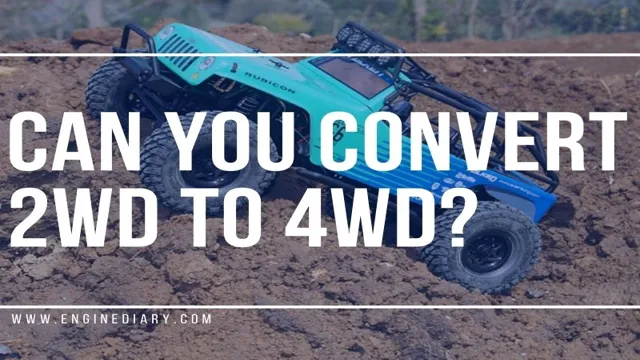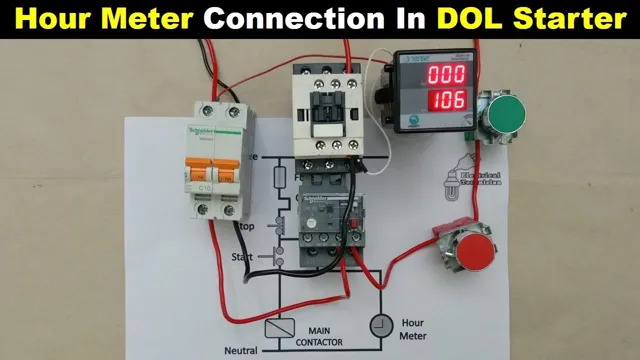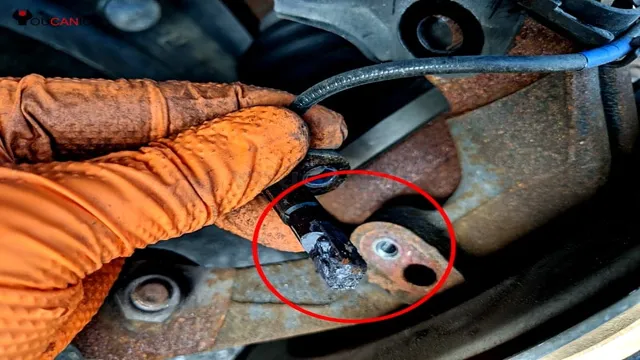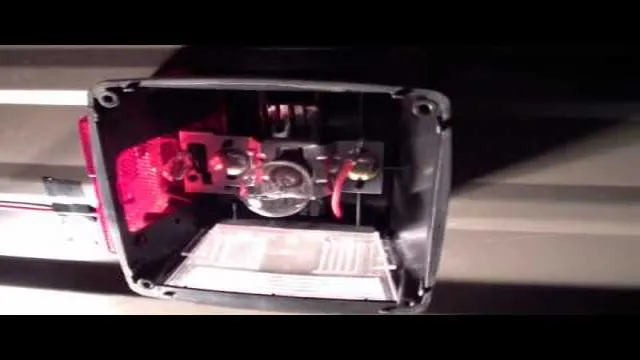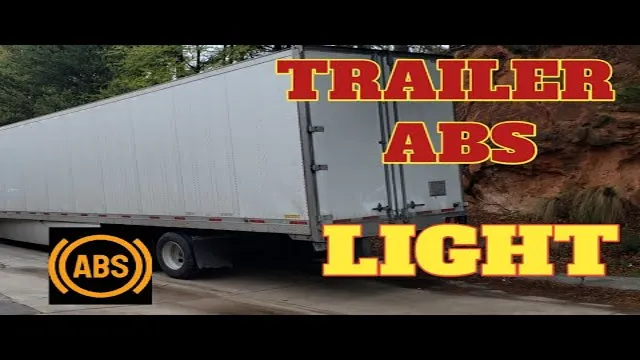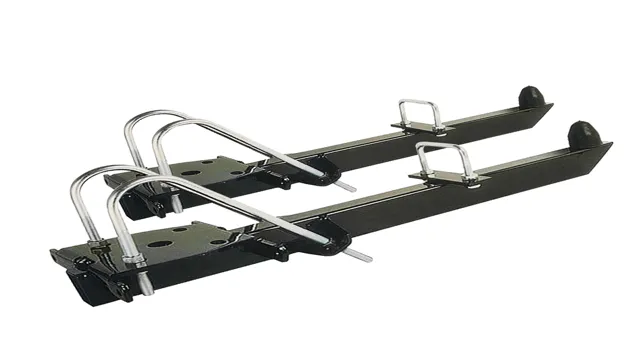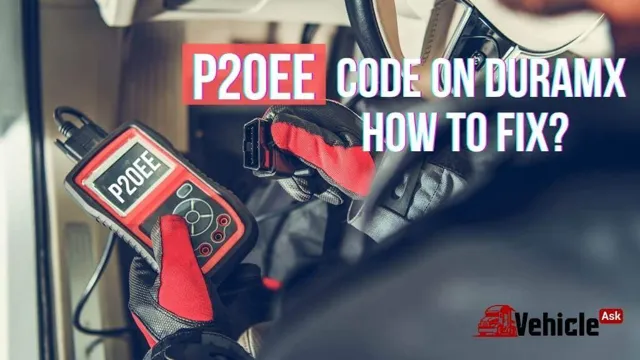From 2WD to 4WD: A Complete Guide to Converting your Vehicle
Have you ever wondered if it’s possible to convert a 2WD into a 4WD vehicle? Well, the good news is that it’s definitely possible! In fact, many off-road enthusiasts have undertaken this challenging conversion project with great success. With the right tools, expertise, and patience, anyone can convert their 2WD vehicle into a 4WD powerhouse that can handle even the toughest terrain. In this step-by-step guide, we’ll walk you through everything you need to know about converting your 2WD vehicle into a 4WD monster.
From selecting the right components to installing them properly, we’ve got you covered. So, buckle up and get ready to embark on an exciting adventure into the world of 4WD conversions!
Understanding the Difference Between 2WD and 4WD
If you’re someone who’s interested in off-roading, then understanding the difference between 2WD and 4WD is crucial. 2WD vehicles have power delivered to only two wheels, typically either the front or rear wheels, while 4WD or all-wheel drive (AWD) vehicles can send power to all four wheels. This means that 4WD vehicles have better traction and are more reliable in slippery terrain than 2WD vehicles.
Some people might want to convert their 2WD vehicle into a 4WD or AWD vehicle. Doing so, however, can be a complicated and expensive process, as it typically involves swapping out the transmission, driveshaft, and differential of the vehicle. Professional mechanics who specialize in conversions can help with the process, but it’s important to do extensive research and understand the cost and feasibility of the conversion before diving into the project.
Pros and Cons of Converting 2WD to 4WD
Converting 2WD to 4WD can be a major decision for vehicle owners to make. Before considering the pros and cons, it’s important to understand the difference between 2WD and 4WD. 2WD vehicles operate with power only going to either the front or rear wheels, while 4WD vehicles operate with power going to all four wheels.
This difference can greatly impact a vehicle’s performance on various terrains and weather conditions. Now, let’s dive into the pros and cons of converting 2WD to 4WD. One major advantage of converting is improved traction.
4WD vehicles are better equipped to handle off-road conditions like mud, snow, and rocks. This makes them ideal for people who frequently travel through rugged terrains or harsh weather conditions. Another advantage is increased resale value.
4WD vehicles generally have a higher market value than their 2WD counterparts, which means converting can potentially increase the value of a vehicle. On the downside, converting can be expensive and time-consuming. The process can involve replacing the entire drivetrain, which can be a significant investment.
Additionally, 4WD vehicles tend to have lower fuel efficiency than their 2WD counterparts. This means that converting could result in higher fuel costs. Overall, the decision to convert from 2WD to 4WD depends on individual preferences and driving needs.
Consider factors like the terrain, weather conditions, and level of investment when making this decision. Ultimately, choosing the right drivetrain for a vehicle can greatly impact its performance and value in the long run.
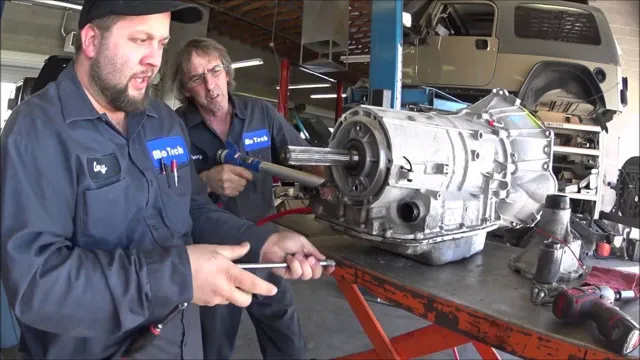
Assessing the Viability of the Conversion
Converting a 2WD to a 4WD is a great way to enhance the off-road capabilities of your vehicle. But before you jump into the project, it’s important to assess the viability of the conversion. First, you need to determine if the vehicle’s frame and engine are compatible with the new drivetrain components.
Second, you need to decide if the cost of the conversion is worth it in comparison to selling your 2WD and purchasing a 4WD vehicle. Third, you need to consider if the conversion is legal in your state and meets safety standards. It’s also important to research and compare the aftermarket parts available for your specific vehicle to ensure compatibility and functionality.
Ultimately, a successful conversion relies on proper planning, knowledge, and execution. With careful consideration and attention to detail, a 2WD to 4WD conversion can result in a capable off-road machine that enhances your driving experience.
Costs and Parts Required for the Conversion
When considering converting a vehicle to electric power, it’s important to assess the viability of the conversion. One key factor to consider is the costs and parts required. The cost of the conversion can vary greatly depending on factors such as the size of the vehicle and the desired range.
However, it’s important to keep in mind that an electric vehicle can save you money in the long run with lower maintenance and fuel costs. When it comes to parts, the necessary components can include an electric motor, battery pack, and controller, among others. It’s important to ensure that these parts are of high quality and compatible with your specific vehicle.
However, with the right research and planning, converting a vehicle to electric power can be a practical and eco-friendly option.
Tools Needed for the Conversion
When it comes to converting a website to a different platform or redesigning it, it’s important to assess the viability of the project before getting started. One of the most crucial factors to consider is the compatibility of your existing website with the new platform or design. This can largely depend on the tools and resources available for the conversion process.
For instance, if you’re moving from WordPress to Shopify, you’ll need to check whether your WordPress plugins and themes can be easily transferred to the new platform. Additionally, you’ll want to ensure that the new platform offers the same or better functionality as your existing website. This can involve assessing the available features and integrations, as well as looking for any potential limitations.
Ultimately, before committing to a website conversion, it’s important to weigh the benefits and risks, and ensure that the process will result in a website that meets your needs and goals.
Preparing the Vehicle for the Conversion
Converting a 2WD vehicle into a 4WD vehicle can be an exciting project for any off-roader. However, before you start swapping out parts and making modifications, you need to properly prepare your vehicle. First and foremost, do your research and make sure you have a clear understanding of the process.
You’ll need to gather all the necessary parts and tools, and have a solid plan in place. Begin by inspecting your vehicle to determine what needs to be changed. Typically, you’ll need to replace the transfer case, front axle, and differential, along with other smaller parts.
It’s also essential to ensure that the new parts match the specifications and requirements for your particular vehicle make and model. Keep in mind that the process of converting a 2WD to a 4WD can be complex and time-consuming, so it’s best to have an experienced mechanic or expert help you out. With the right preparation and assistance, you can successfully convert your 2WD vehicle into a 4WD and enjoy all the benefits of off-road driving.
Removal of Parts for 4WD Installation
Before installing the 4WD to your vehicle, it is essential to prepare it for the conversion process. This involves removing specific parts and components from the vehicle to allow for the installation of the system. These may include the exhaust system, drive shaft, and transfer case.
Removal of the exhaust system will create space that will allow for the installation of an additional driveline necessary for 4WD systems. The transfer case needs to be installed in a specific location, and thus, the drive shaft needs to be removed to access the area. To ensure a smooth and successful conversion, it is necessary to handle these parts carefully, label and set them aside, guaranteeing proper reinstallation.
Additionally, you need to ensure that all parts are compatible, as some components may need to be replaced with new and improved ones. This process may sound tedious, but it is crucial to ensure the conversion is seamless and the vehicle performs as intended.
Installation of 4WD Parts
Preparing your vehicle for the installation of 4WD parts is an essential step before diving into the conversion process. Before you even start thinking about buying and installing parts, there are a few things you need to consider. Firstly, it’s critical to ensure that your vehicle’s frame is strong enough to handle the added weight and stress of the 4WD system.
To do this, take your vehicle to a professional mechanic and have them inspect the frame and suspension thoroughly. They will be able to advise you on any upgrades that may be necessary to support the added weight. Secondly, make sure your brakes and steering are in good working order.
These systems are integral to the safety of your vehicle and must be functioning correctly before any further work is undertaken. Lastly, upgrade your vehicle’s cooling system as 4WD systems tend to place a heavy load on the engine, causing it to heat up quickly. These pre-installation checks will give you peace of mind, knowing that your vehicle is ready to safely handle the added weight and stress of a 4WD system.
Testing the Conversion
When it comes to converting a 2wd to a 4wd, testing is an essential and often overlooked step. You might have done your research, gathered all the necessary parts and equipment, and followed every step in the conversion process to a T, but without proper testing, you won’t know if everything is working as it should. Start by checking all the systems, such as the transmission, drivetrain, and suspension, to make sure there are no leaks or other issues.
It’s also crucial to test the 4wd engagement and disengagement system to ensure it’s working correctly. Take it out for a test drive and pay attention to any strange noises, vibrations, or issues with handling. If everything checks out, congratulations! You’ve successfully converted your 2wd to a 4wd, and you’re ready to take on any terrain that comes your way.
On-Road Driving Tests
On-road driving tests are an essential part of testing the conversion of a vehicle. These tests evaluate the vehicle’s performance, handling, and safety on public roads. During these tests, the driver checks whether the vehicle is easy to maneuver, turn, and stop.
They also evaluate the vehicle’s braking system and accelerator, paying close attention to how the vehicle responds in different road conditions. For wheelchair accessible vehicles, the driver ensures that the wheelchair user can enter and exit the vehicle with ease and that their safety is not compromised during transport. After the on-road driving tests, the vehicle undergoes further inspection, where any necessary adjustments are made to ensure it meets all safety standards and regulations.
Ultimately, these tests help guarantee that the converted vehicle is safe, reliable, and fit for purpose.
Off-Road Tests and Considerations
Off-road tests are essential when it comes to any vehicle conversion. When considering converting a vehicle for off-road purposes, it’s important to test the new modifications to ensure they can handle the terrain. Off-road environments can be harsh, and thus the vehicle needs to be able to handle all the harsh bumps and turns.
The most important test for any off-road conversion is testing the suspension system. The suspension system should be able to absorb the shocks from off-road terrains while maintaining control over the vehicle. It’s also important to test the engine, transmission, and drivetrain to ensure they are in proper condition.
If any of these components fail on an off-road trip, the outcome could be disastrous. Thus, it is crucial to test each component thoroughly before embarking on any off-road mission. As you test the conversion, make sure to keep a checklist of what needs to be fixed or improved.
This list could be used to keep track of the essential things that were working well and the areas that need to be improved to ensure that your off-road rig will give you the best experience possible.
Seeking Professional Assistance When Necessary
Converting a 2WD to a 4WD can be a complex process that requires a certain level of expertise. If you’re not confident in your mechanical skills or don’t have the tools and equipment necessary to complete the conversion, it’s best to seek professional assistance. A skilled mechanic can guide you through the process, recommend the right parts for your specific vehicle, and ensure that the conversion is done safely and efficiently.
Additionally, a professional conversion will likely come with a warranty, providing peace of mind in the event that something goes wrong down the road. So, while it may be tempting to attempt a 2WD to 4WD conversion on your own, it’s always best to leave it to the experts who have the knowledge and experience to get the job done right.
Conclusion
In conclusion, converting a 2wd to a 4wd is not an impossible feat, but it requires a considerable amount of work, patience, and a good sense of humor. You may have to spend some time and money on acquiring the necessary parts and tools, but the end result is worth the effort. Just remember to stay safe, ask for help if needed, and never underestimate the power of determination and a good pun.
After all, if you want to go from two-wheeling to four-wheeling, you gotta have the drive!”
FAQs
What are the benefits of converting a 2WD to a 4WD?
Some benefits of converting a 2WD to a 4WD include increased traction on slippery or uneven terrain, improved handling and stability, and the ability to tow heavier loads.
Can any vehicle be converted from 2WD to 4WD?
While it is technically possible to convert almost any vehicle from 2WD to 4WD, it can be a complex and expensive process. It is generally not recommended unless you have extensive mechanical experience and a clear understanding of the costs and benefits involved.
What are the main steps involved in converting a 2WD to a 4WD?
The basic steps involved in converting a 2WD to a 4WD include installing a new transfer case, adding new front and rear axles, installing a new driveshaft, and upgrading the suspension and steering components. The specific process will vary depending on the make and model of your vehicle.
How much does it typically cost to convert a 2WD to a 4WD?
The cost of converting a 2WD to a 4WD can range from several thousand dollars to tens of thousands of dollars, depending on the specific parts and labor required. It is important to get a detailed cost estimate from a reputable mechanic before beginning the conversion process.

